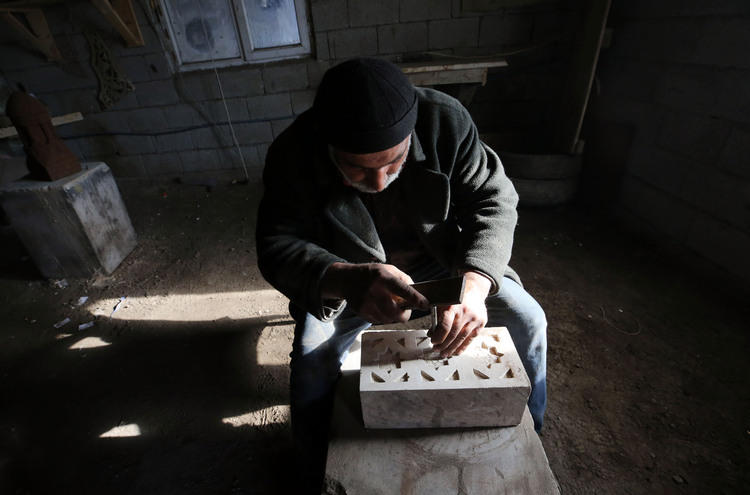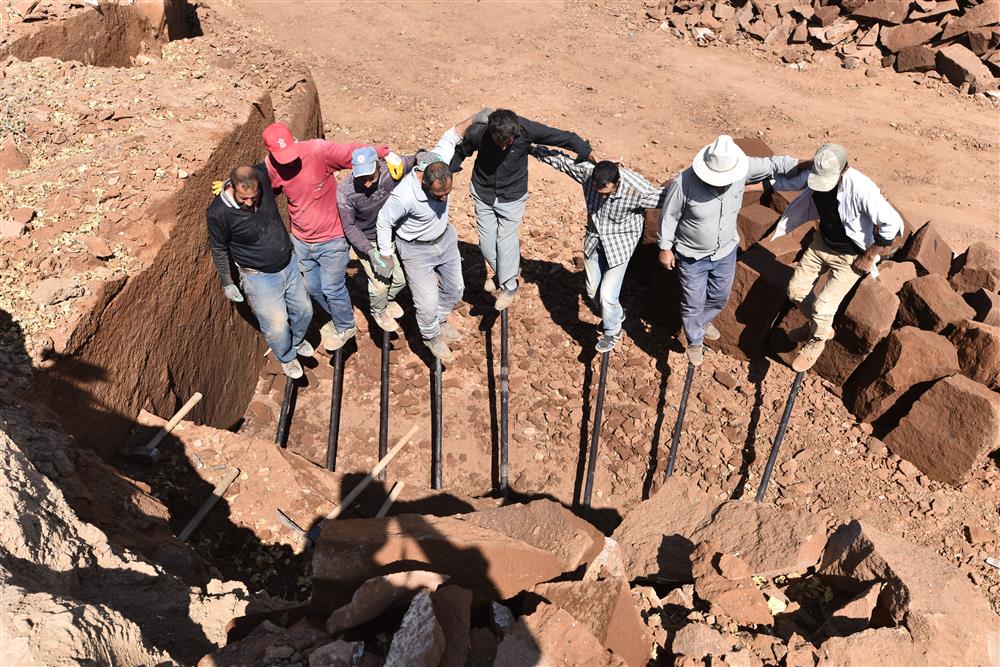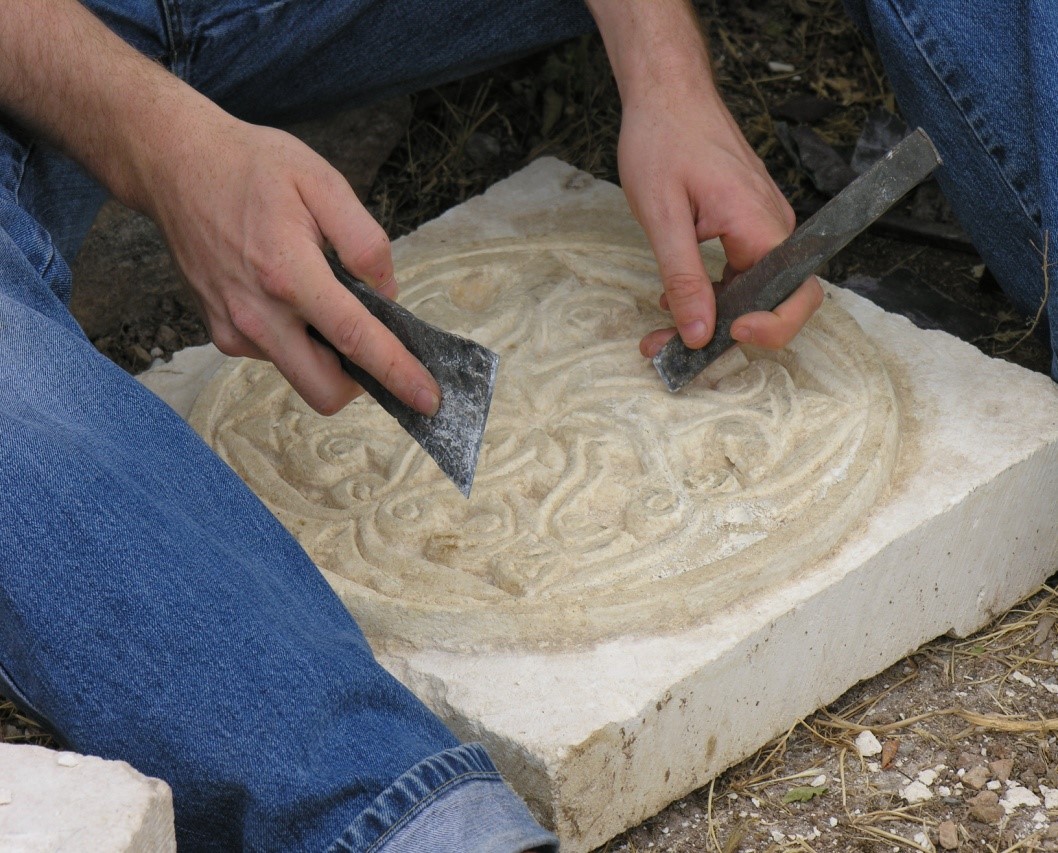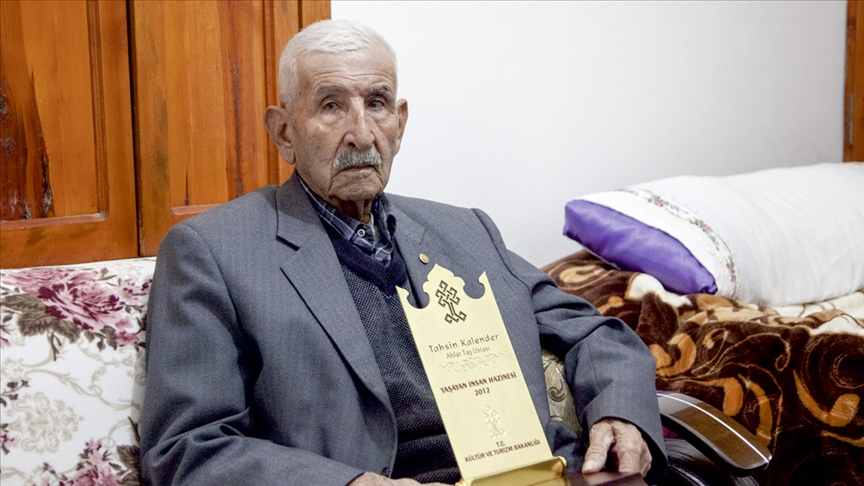Traditional Ahlat Stonework is defined as a cultural heritage practice in the Ahlat district of Bitlis province, Turkey, involving the extraction of volcanic stones from the slopes of Mount Nemrut and their processing, decoration, and transformation into architectural and artistic works using traditional knowledge, methods, and skills.
Since 2009, this element has been registered in the Turkey National Inventory of Intangible Cultural Heritage (SOKÜM) under inventory number 20221.003.05/13. It encompasses knowledge and practices related to nature and the universe, as well as the tradition of traditional craftsmanship and handicrafts. Traditional Ahlat Stonework covers the entire process from stone extraction to cutting, shaping, decoration, and use in buildings or artworks. In these processes, the knowledge, skills, aesthetic understanding, and cultural experiences of stone masters play a decisive role. At the same time, this knowledge and expertise contribute to the preservation of the cultural identity of the people of Ahlat and the transmission of regional aesthetic sensibilities from generation to generation. On 30 November 2022, a project prepared under the leadership of the Ministry of Culture and Tourism led to the inscription of Traditional Ahlat Stonework on the UNESCO List of Intangible Cultural Heritage in Need of Urgent Safeguarding.

Traditional Ahlat Stonework (Anadolu Ajansı)
UNESCO Registration and Global Significance
Traditional Ahlat Stonework was inscribed on the UNESCO List of Intangible Cultural Heritage in Need of Urgent Safeguarding on 30 November 2022.【1】 Turkey’s national nomination dossier was evaluated and accepted by the Intergovernmental Committee for the Safeguarding of the Intangible Cultural Heritage, held from 28 November to 3 December 2022 in Rabat, Morocco. The UNESCO registration is significant for the protection, continuation, and raising of national and international awareness of stone craftsmanship.
Traditional Ahlat Stonework (UNESCO)
Physical Characteristics of Ahlat Stone
Ahlat stone is a product of the volcanic formation of Mount Nemrut and is extracted from quarries using traditional methods and hand tools. Initially, the stone is soft and suitable for working; over time, it hardens and gains durability. This characteristic limits the processing time and directs stone masters to work on the stone shortly after extraction. The colors of Ahlat stone include red, black, gray, white, and ash tones; this diversity supports the aesthetic integrity of the structure or artwork and reinforces its cultural value.
Quarries cover a wide area and are not currently threatened by shortages; however, unregulated operations and primitive methods make the extraction of large stone blocks difficult and increase waste. Therefore, the sustainable and economical use of quarries is important for the continuity of the craft and tradition. The main method used for centuries in extracting Ahlat stone is the “pinning technique,” where iron wedges are driven into the rock in a straight line to obtain stone blocks of desired dimensions. Additionally, traditional knowledge of nature and the local calendar are considered in the extraction process. The physical properties of the stone directly influence its uses; its ability to remain warm in winter and cool in summer is a key reason for its selection as a building material.

Ahlat Stone (T.C. Kültür ve Turizm Bakanlığı)
Processing and Decoration Techniques
Traditional Ahlat Stonework involves several stages from extraction to decoration and preparation for use.
Rough Work (Shaping Stone Blocks)
Workers at the quarries shape large stone blocks using the pinning technique. Iron wedges are driven into the rock to obtain blocks of the desired size. The extracted stones are then sent to sawmill workshops, where they are cut into flat shapes suitable for use in walls, bridges, and other structures.

Rough Work (T.C. Kültür ve Turizm Bakanlığı)
Fine Work (Carving)
Stone masters carve the stone with hand tools according to its intended use, creating oval forms or detailed sections. This stage is critical in the production of architectural structures and unique decorative elements. The quality of carving directly affects the precision of assembly and the durability of the structure.

Fine Work (T.C. Kültür ve Turizm Bakanlığı)
Decoration (Engraving, Relief, and Carving Techniques)
Carved stones are decorated using engraving, relief, and carving techniques. Plant, geometric, and calligraphic motifs are commonly used. These motifs not only add aesthetic value but also convey cultural and historical messages. The time required depends on the complexity of the motif; simple motifs can be completed in half an hour, while complex ones may take a full day. This stage is especially prominent in gravestones, inscriptions, and decorative architectural elements.
Preparation for Use and Installation
Processed stones are prepared for use in architectural structures, cemeteries, tombs, inscriptions, fountains, and other decorative elements in historical monuments. Notable historical structures using Ahlat stone include Divriği Great Mosque and Hospital (Sivas), Divriği Ahmet Shah Tomb (Sivas), Tercan Mama Hatun Tomb (Erzincan), Gevaş Halime Hatun Tomb (Van), and Alay Han (Aksaray). Ahlat stone is also known to be used in restoration projects both within Turkey and internationally.

Building Using Traditional Ahlat Stonework (T.C. Kültür ve Turizm Bakanlığı)
Transmission of Knowledge and Skills
Traditional Ahlat Stonework relies on the transmission of knowledge and skills from masters to apprentices. The apprenticeship period lasts several years; young people begin independent work as masters in their mid-twenties. Masters teach the physical properties of the stone, processing and decoration techniques, the meanings of motifs, and aesthetic principles. Tahsin Kalender, declared a Living Human Treasure in 2012, has played a critical role in passing this tradition to future generations. Through the masters he trained and the works he left behind, Kalender ensured the technical and aesthetic standards of stone craftsmanship have been preserved. Today, the transmission of traditional knowledge and skills is supported not only through the master-apprentice relationship but also through broader educational programs.

Tahsin Kalender (Anadolu Ajansı)
Occupational Health and Working Conditions
Stone craftsmen face occupational accidents, work-related illnesses, and health problems arising during work. Studies, including interviews and surveys with stoneworkers, have assessed occupational hazards and working conditions. The production process includes the extraction of stone blocks from quarries, flat cutting in sawmill workshops, carving and detailed shaping by stone masters, and the engraving, relief, and carving of motifs and decorative patterns onto the stone.
Challenges in Traditional Practices
In recent years, Traditional Ahlat Stonework has faced various threats affecting its viability. Population decline and youth migration to large cities have made sustaining the master-apprentice relationship difficult and hindered the recruitment of new apprentices. The widespread use of modern construction techniques and materials has decreased demand for traditional stone craftsmanship. This situation limits the transmission of technical practices and cultural values to future generations.
Conservation and Sustainability
Key actors in the preservation of Traditional Ahlat Stonework include the Ministry of Culture and Tourism, Ahlat District Governorship, and Ahlat Municipality. In addition, the Ahlat Chamber of Tradesmen and Craftsmen, Ahlat Association for the Preservation of Nature and Cultural Heritage, Ahlat Photographers Association, Ahlat Museum, stone masters, academics, and apprentices participate in preservation efforts. The conservation action plan aims to address economic and social changes, maintain the transmission of traditional knowledge and skills, strengthen the master-apprentice relationship, promote traditional architecture and material use, raise social awareness, and ensure the sustainability of stone quarries.
Cultural and Social Significance
Traditional Ahlat Stoneworksupports national-level cultural continuity and identity awareness as an integral component of the cultural identity of the people of Ahlat. Through architectural structures, gravestones, inscriptions, and other works, the city’s historical, aesthetic, and cultural texture is concretely manifested. The knowledge, skills, aesthetic understanding, and cultural experience of stone masters are transmitted to younger generations; this process elevates stone craftsmanship from a mere craft to a symbol of regional culture and collective memory.

Traditional Ahlat Stonework (Anadolu Ajansı)


